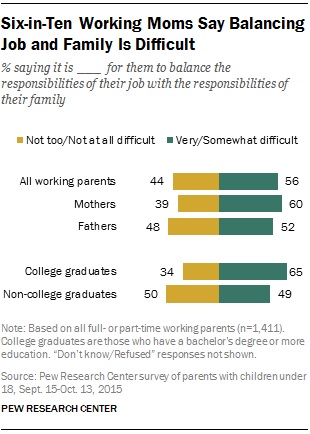New mothers and fathers everywhere wrestle with the issue of juggling a career and family. Traditionally, it’s an issue that has most impacted mothers. Some want to stay home, but have to work to supplement the household income. Others want to work, yet worry over trusting someone else to care for their child.
But what about working dads? What happens when a dad decides he doesn’t want to miss more time with his child, but feels continuing to work is his only financial option?
As HR leaders, if you’re not asking yourself these questions and building a benefits structure around the answers for both male and female employees, you’re at risk of losing them. Even when those who are parents do stay, they may well lose motivation and their productivity may suffer.
Nationally, companies are not only becoming more generous with their parental leave, but are recognizing the need to be more accommodating and supportive of parents while at work.
Here are some things your organization can do to help new parents and those planning a family:
Flexibility and remote work
Believe it or not, salary isn’t the most important benefit to many employees. An August Flexjobs survey spoke to 1,200 parents about their workplace preferences and the majority rated flexibility as more important than salary. Some leaders see flexibility as an opportunity for employees to slack off, but parents who are able to worry less about their children can focus more on their goals and tasks.
Flexibility also allows employees to complete work in a way that’s most productive for them. The Federal Reserve Bank of St. Louis looked at “the effect of pregnancy and parenthood on the research productivity of academic economists” and after surveying 10,000 of them, found mothers were more productive than childless women.
Flexibility means something different to every employee. So, it’s important to survey your team to fully understand what type of flexibility your employees need. While one person may just want the option to work a bit earlier or later, knowing they’ll need to leave for an appointment in the middle of the day, another might want the ability to work from a home office a few days a week.
Once you understand employees’ expectations, work out a plan with ground rules. Make sure they understand your door is open to discuss what’s working or what needs tweaked to help them reach their performance goals.
Stress management
Out-of-control stress is harmful to any employee. Working parents who go home to deal with even more stress may be fighting harder to stay healthy and motivated than you think.
 Among parents of both sexes surveyed by the Pew Research Center, 56% agreed that balancing work and family is difficult. Although we typically think of this as a women’s issue, men feel this stress as well – 52% of working fathers say it’s difficult to balance work and family. (60% of mothers said that.)
Among parents of both sexes surveyed by the Pew Research Center, 56% agreed that balancing work and family is difficult. Although we typically think of this as a women’s issue, men feel this stress as well – 52% of working fathers say it’s difficult to balance work and family. (60% of mothers said that.)
Most people don’t have the tools and resources to appropriately handle stress. That’s when it can actually become a health concern. Keeping employees healthy doesn’t just benefit them — it brings a higher quality of work and productivity back to the office. Gallup’s latest report found employees who were healthy and felt engaged at work were 30% less likely to miss work during any month.
Stress-relieving benefits don’t have to be expensive and outlandish. Offer employees 30 minutes a day when they’re expected to take a break from work. They can take a walk outside, run errands, or even visit their kids at school during lunch.
No matter how your team decides to address wellness in the office, be sure to make it part of your company culture. Actively making it part of your own and your employees day will place it at a higher priority, ensuring daily deadlines don’t take over and leave employees’ minds reeling from stress.
Paid time off and parental leave
Parental leave is a great way for employers to show they value their employees and are supportive of their parental duties. In a 2013 study of California’s family leave law, women provided paid leave were much more likely to return to their job nine to 12 months after giving birth instead of quitting while pregnant.
Paid time off enables parents to take care of a sick child, attend a child’s school or sporting event, or just “be there” for a child without worrying about missing pay or other consequences. Even though parental leave and paid time off give employees more time out of the office, better leave policies will keep them motivated to return to work.
Knowing leave policies are in place for employees is the first step. However, following up with support will let them know you’re invested in their and care about them as a person, not just as part of the company wheel. Guide your team through the leave process, offer your assistance and ear for any questions or concerns, and let them know their job will be waiting when they’re ready to return. It may be sooner than you think.
